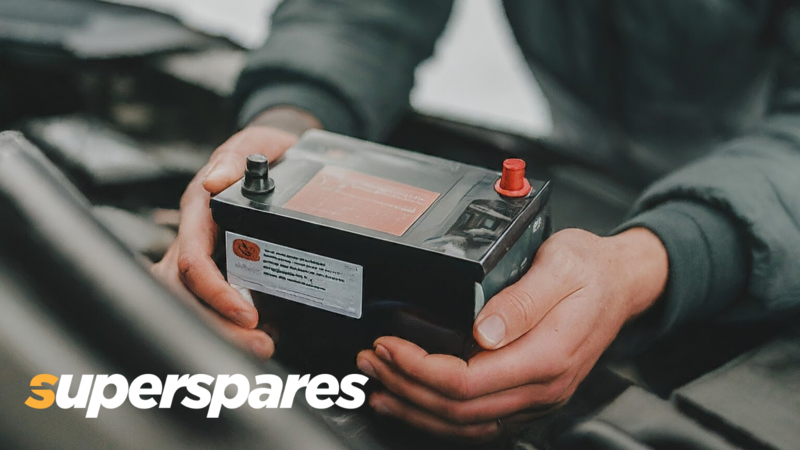
Whether you drive a sturdy 4x4, a high-performance car, or a reliable passenger vehicle in the Land Down Under, understanding how to replace a car battery is essential for smooth travels. In 2021, statistics revealed that dead batteries emerged as the leading cause of breakdowns, accounting for 43% of all roadside callouts. In this guide, we'll explore the steps involved in replacing a car battery, how to identify signs that your battery needs replacement, and get insights into the costs associated with this maintenance task.
How to Know if Your Car Battery Needs to be Replaced
-
Slow Engine Crank:
If you notice a sluggish engine crank when starting your car, it may be a sign that your battery is losing its charge.
-
Dimming Lights:
Dimming headlights or interior lights can indicate a weakened battery, especially when the engine is idling or at low speeds.
-
Warning Lights on Dashboard:
Modern cars often have battery warning lights on the dashboard. If this light is illuminated, it's time to check your battery.
-
Age of the Battery:
On average, car batteries last around 3–5 years. If your battery is reaching the end of its lifespan, consider a replacement.
How Do You Replace a Car Battery?

-
Step 1: Gather Necessary Tools and Materials
Before you start the replacement process, make sure you have the following:
-
Step 2: Park and Turn Off Your Vehicle
Ensure your car is parked on a flat surface with the engine turned off. Engage the handbrake to secure the vehicle in place.
-
Step 3: Locate the Battery
In most vehicles, the battery is located under the bonnet. Refer to your car's manual to find the exact location.
-
Step 4: Disconnect the Battery
Using the wrench or socket set, loosen and remove the negative terminal first, followed by the positive terminal. This minimises the risk of electrical shock.
-
Step 5: Remove the Old Battery
Unscrew the battery bracket and carefully lift out the old battery. Be mindful of its weight, as car batteries can be heavy.
-
Step 6: Clean Battery Terminals
Use a battery terminal cleaner to remove any corrosion from the terminals. Apply a thin coat of terminal protection spray to prevent future corrosion.
-
Step 7: Install the New Battery
Place the new battery in the same position as the old one. Connect the positive terminal first, followed by the negative terminal. Tighten the terminals securely.
-
Step 8: Test the Battery
Start your vehicle to ensure the new battery is functioning properly.
Main Causes Behind Flat Batteries
Looking to steer clear of a car battery issue soon? Be proactive in maintaining your car by being mindful of these primary causes of flat batteries.
-
Lights, Camera, Discharge: Forget to switch off your headlights? Leaving interior lights on overnight? These small, but mighty, power drainers can lead to a drained battery come morning.
-
Chilly Temperatures: Cold weather can be brutal on batteries, reducing their efficiency. The next time Jack Frost pays a visit, be prepared for a potential power struggle under the bonnet.
-
Faulty Charging System: A malfunctioning alternator or voltage regulator can fail to recharge your battery properly, leaving you with a flat one sooner than you'd like.
-
Parasitic Drains: Certain electrical components may continue sipping power even when your car is turned off. Faulty wiring or a malfunctioning component could be silently draining your battery's life.
-
Ageing Gracefully: Unlike fine wine, batteries don't age well. As they grow older, their ability to hold a charge diminishes. Regular checks and timely replacements can prevent surprises.
-
Under the Hood Gremlins: Issues with the starter motor or ignition switch can lead to repeated attempts to start the engine, ultimately sapping the life out of your battery.
-
Lack of TLC: Neglecting your battery's basic needs, like cleaning corrosion from terminals and ensuring proper connections, is like asking for trouble. Regular maintenance can go a long way.
How Much is a Car Battery Replacement in Australia?
The cost of a car battery replacement in Australia varies depending on the vehicle make and model, battery type, and brand. On average, you can expect to pay between AUD 100 to AUD 300 for a new car battery. It's advisable to consult with your local auto parts store or mechanic for specific pricing tailored to your vehicle.
Ensure you find the exact battery for your application, otherwise, it could cause damage to your ECU. We strongly recommend the high quality Century brand, check the correct battery for your car here and come back to SuperSpares to find the battery you're looking for.
In conclusion, being familiar with the process of replacing a car battery and recognising the signs of a failing battery are crucial for maintaining the reliability of your vehicle. Regular checks and timely replacements can save you from unexpected breakdowns, ensuring your Australian automotive adventures go uninterrupted.







